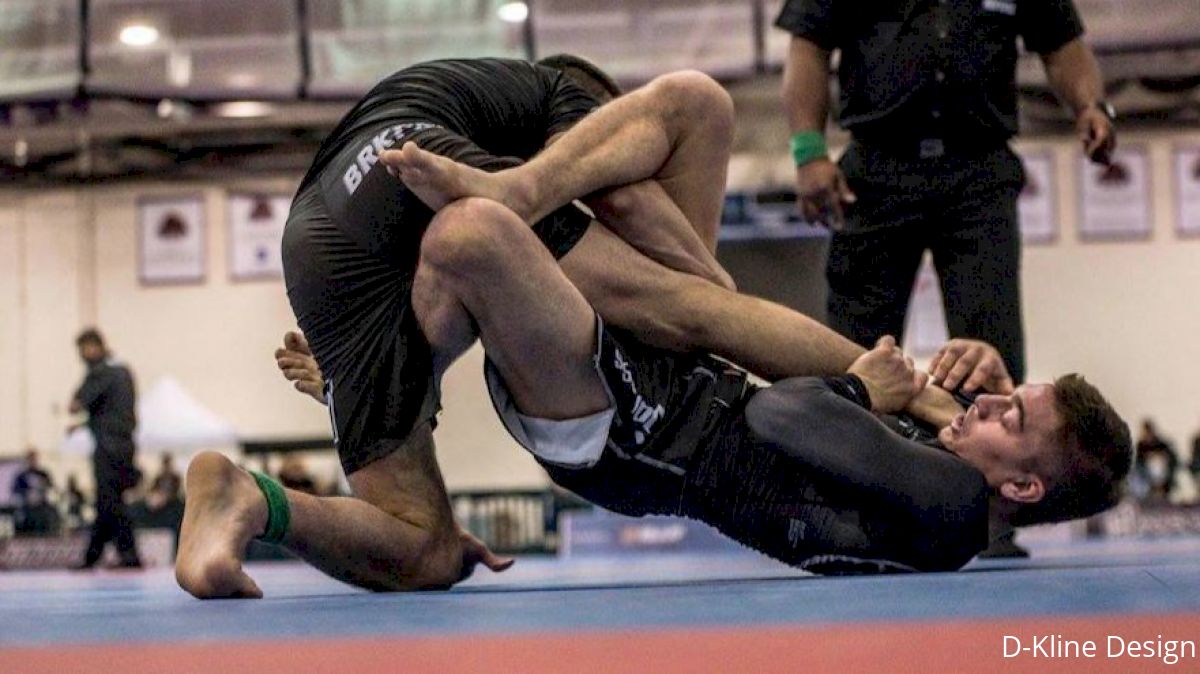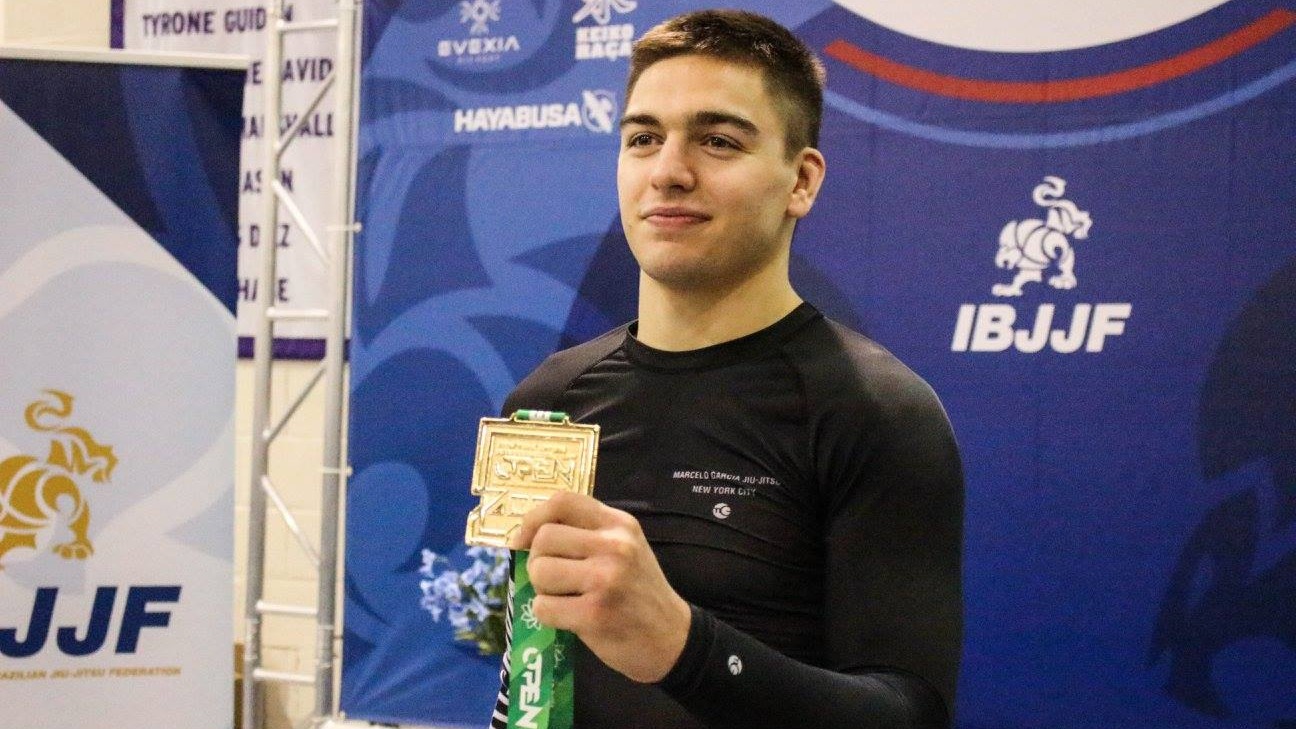Gianni Grippo: Avoiding Flaws In Adapting From Gi To No-Gi
Gianni Grippo: Avoiding Flaws In Adapting From Gi To No-Gi
Gianni Grippo writes exclusively for FloGrappling on the challenges of balancing training for both gi and no-gi competition.

Gianni Grippo writes exclusively for FloGrappling on the challenges of balancing training for both gi and no-gi competition.
With the World Championship -- the biggest gi tournament of the year -- now in the rearview mirror, many people are beginning to shift their focus for the upcoming no-gi season, whether it be for a superfight, IBJJF events, or ADCC.
Although there are always gi tournaments popping up all over the place, the majority of the focus is now being done without the gi.

Gianni between matches at the IBJJF No-Gi Pans in New York. Photo: Hywel Teague / FloGrappling
This transition from gi to no-gi season, while wonderfully easier in terms of laundry, can be a difficult transition for many who focus exclusively on training in the gi during that time of the season. Imagine the feeling of training with handfuls of cloth grips and anywhere between three to five pounds of gi material on you for six months of the year, only to have to quickly adapt to life without it when no-gi season comes around? It's not easy to get used to.
In my own personal experience, I've suffered similar withdrawals when making the transition. Back at Renzo's, I would train nearly 10 months of the year straight only in the gi and only leave maybe two months of training without the gi to prepare for No-Gi Pans and Worlds. I'd usually feel lost for the first few weeks of training, so I wasn't really preparing at my best for very long.
Let me just say that this flaw in my preparation didn't come from my academy's scheduling: I did it all to myself. John Danaher still had his no-gi classes during the day, and there were still no-gi sessions being run at night throughout the entire year. I just chose not to attend them.
Instead I would use the Renzo Gracie HQ's massive facility to my advantage and find my own space to drill or set up my own gi training sessions during those times. Granted, I was always 100 percent prepared for everything that came my way in the gi, but the more I ignored training no-gi the more I put myself behind the eight ball when no-gi season would eventually come around.
Keep in mind from someone who trains half gi, half no-gi for the whole year, I find that both gi and no-gi training can help each other equally.
When I train no-gi, I'm forced to stay tighter with my positions as I don't have my usual grips, and I have to rely more on using my weight to properly control my opponent rather than rely on grabbing the gi.
Do you want to know a secret on how I improve my berimbolos? I am always drilling and training them when I can in no-gi! Being forced to work with a lack of grips actually makes things a lot easier when I have to perform a berimbolo in the gi.
On the opposite end, I'm still always training in the gi when no-gi season is around too. I may have different focuses, but I'll never completely disregard either gi or no-gi training.

Gold at the IBJJF New York Spring International Open. Photo: Nico Ball
Take it from me, I feel fully capable now of jumping head first into no-gi season only a short period of time after the world championships because I've continued to train both with and without the gi for the entire year.
You don't need to go all in on one way or the other. Have the right focus and you can always be well prepared for life with or without the gi!

Watch Gianni Grippo vs. Dustin Akbari in a no-gi submission-only match on Fight To Win Pro 38
• Lessons On Competing From Leandro Lo And Marcelo Garcia
• Even Black Belts Struggle With Overcoming Competition Anxiety
• How Can The USA Become #1 Jiu-Jitsu Power In The World?
• Training For 2017 Worlds At Marcelo Garcia's Gym
With the World Championship -- the biggest gi tournament of the year -- now in the rearview mirror, many people are beginning to shift their focus for the upcoming no-gi season, whether it be for a superfight, IBJJF events, or ADCC.
Although there are always gi tournaments popping up all over the place, the majority of the focus is now being done without the gi.

Gianni between matches at the IBJJF No-Gi Pans in New York. Photo: Hywel Teague / FloGrappling
This transition from gi to no-gi season, while wonderfully easier in terms of laundry, can be a difficult transition for many who focus exclusively on training in the gi during that time of the season. Imagine the feeling of training with handfuls of cloth grips and anywhere between three to five pounds of gi material on you for six months of the year, only to have to quickly adapt to life without it when no-gi season comes around? It's not easy to get used to.
In my own personal experience, I've suffered similar withdrawals when making the transition. Back at Renzo's, I would train nearly 10 months of the year straight only in the gi and only leave maybe two months of training without the gi to prepare for No-Gi Pans and Worlds. I'd usually feel lost for the first few weeks of training, so I wasn't really preparing at my best for very long.
My early mistakes, and what it cost me
I realize that this approach was very flawed now, as I could have used some extra time to adapt to life without the gi and then start to prepare properly. My lack of success at No-Gi Worlds at the lower belts stemmed from ignoring no-gi training throughout the majority of the calendar year (I find three consecutive bronzes at No-Gi Worlds to be a big lack of success).Let me just say that this flaw in my preparation didn't come from my academy's scheduling: I did it all to myself. John Danaher still had his no-gi classes during the day, and there were still no-gi sessions being run at night throughout the entire year. I just chose not to attend them.
Instead I would use the Renzo Gracie HQ's massive facility to my advantage and find my own space to drill or set up my own gi training sessions during those times. Granted, I was always 100 percent prepared for everything that came my way in the gi, but the more I ignored training no-gi the more I put myself behind the eight ball when no-gi season would eventually come around.
How I divide my training now
I believed that the only way to prepare for gi events was to train exclusively in the gi, and I still don't think that was really a wrong approach. But what I've learned since then is that no-gi is still another way to prepare for gi events (as I've mentioned in past articles) and that to find success in no-gi it's important to at least keep a hand in it throughout the entire year.Keep in mind from someone who trains half gi, half no-gi for the whole year, I find that both gi and no-gi training can help each other equally.
When I train no-gi, I'm forced to stay tighter with my positions as I don't have my usual grips, and I have to rely more on using my weight to properly control my opponent rather than rely on grabbing the gi.
Do you want to know a secret on how I improve my berimbolos? I am always drilling and training them when I can in no-gi! Being forced to work with a lack of grips actually makes things a lot easier when I have to perform a berimbolo in the gi.
On the opposite end, I'm still always training in the gi when no-gi season is around too. I may have different focuses, but I'll never completely disregard either gi or no-gi training.

Gold at the IBJJF New York Spring International Open. Photo: Nico Ball
My advice for you
What I'd suggest to people who want to be optimally prepared for no-gi season is to never completely ignore it. Even before a gi competition, still go to that no-gi training session on your academy's schedule. It is important to think about the entire picture, not just one match or competition, and jiu-jitsu is jiu-jitsu whether you're in the gi or not.Take it from me, I feel fully capable now of jumping head first into no-gi season only a short period of time after the world championships because I've continued to train both with and without the gi for the entire year.
You don't need to go all in on one way or the other. Have the right focus and you can always be well prepared for life with or without the gi!

Watch Gianni Grippo vs. Dustin Akbari in a no-gi submission-only match on Fight To Win Pro 38
Read more from Gianni Grippo
• Be Thankful For Your Rivals, They Make You Better At Jiu-Jitsu• Lessons On Competing From Leandro Lo And Marcelo Garcia
• Even Black Belts Struggle With Overcoming Competition Anxiety
• How Can The USA Become #1 Jiu-Jitsu Power In The World?
• Training For 2017 Worlds At Marcelo Garcia's Gym